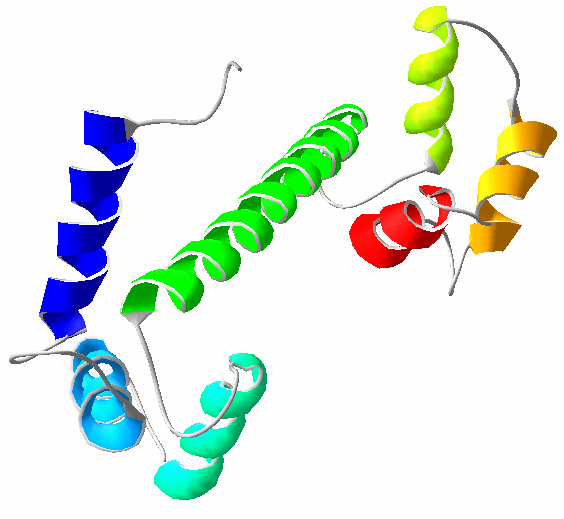As a forward-looking research institute as well as a leading customer service provider in the field of antifungal drug discovery, Creative Biolabs has won a great reputation among our worldwide customers for successfully accomplishing numerous challenging projects. Now we can provide the antifungal drug discovery services against Calmodulin, which is a potential therapeutic target for fungal toxicity.
Introduction of Calmodulin
Calmodulin is a cytosolic protein in eukaryotic cells with a relative molecular mass of 16.7 kDa. Calmodulin is composed of 148 amino acids. Calmodulin from different biological sources has the same amino acid composition and sequence, or only a few differences. In general, calmodulin presents great acid resistant and heat resistant. Calmodulin is involved in the action of many enzymes in the cell. Within each calmodulin molecule, there are four regions that bind to calcium ions and their primary structures are very similar. When the external stimuli increase the concentration of intracellular calcium ions to 10-6 to 10-5 mol, the calmodulin binds to calcium ions, the conformation changes, the helicity increases, and becomes an active molecule, thus combine with enzyme and transform it into an active state.
 Fig.1 3D structure of Ca2+ - bound calmodulin
Fig.1 3D structure of Ca2+ - bound calmodulin
The Importance of Calcium
Calcium is an essential element of the body's life activities. On the one hand, it can maintain the functions of various organelles, such as endoplasmic reticulum and mitochondria. On the other hand, the signaling pathway mediated by calcium ions has regulatory effects on various cell activities such as environmental stress response and morphogenesis. Similarly, the fungal body also has a corresponding calcium homeostasis system and the calcium signaling pathway. The intracellular calcium homeostasis of the fungus is a guarantee for the normal conduct of various life activities. At the same time, calcium ions participate in the transmission of environmental information, thereby activating the downstream cellular responses process. Therefore, the maintenance of calcium homeostasis in fungi is essential for its survival and virulence. Although some of the components that maintain calcium homeostasis in fungi are similar to those in mammals, the subtle structural differences make it a potential target unique to fungi. In Saccharomyces cerevisiae, Aspergillus oryzae and other fungi, the calcium signaling pathway is conserved. In these fungi, the traditional calcium signaling pathway is called the cellular calcium survival pathway. External calcium influx, cytoplasmic calcium binds to calmodulin. The formed Ca2+ / CaM has pleiotropic effects, such as activation of CaN, activation of CaM-dependent protein kinase, etc.
Calmodulin as A Target for Antifungal Drug
As an important pathogenic fungus for humans, Candida albicans also has an extremely complex steady-state system and calcium signaling pathway, and thus constitutes the calcium signaling system of Candida albicans. In Candida albicans, the established calcium signaling pathway is the calcineurin pathway. The calcineurin pathway also includes three extremely important signaling calcium transporters, which are calmodulin, calcineurin, and Crzl. When calmodulin binds to Ca2+, its three-dimensional conformation of the EF-hand region changes, revealing a hydrophobic pocket, which facilitates the binding of the target protein to calmodulin. Through this Ca2+-dependent conformational change mechanism, calmodulin is sensitive to changes in intracytoplasmic Ca2+ concentration and transmits calcium signaling to downstream effectors to mediate signal transduction pathways such as calcineurin pathway and Cmk pathway. In addition to mediating the environmental stress response process of Candida albicans, calmodulin is closely related to the morphogenesis of Candida albicans. For example, the specific inhibition of calmodulin by R24571 significantly inhibits the mycelial development of Candida albicans. Therefore, calmodulin inhibitors can be used as potential drugs to inhibit fungi.
Creative Biolabs offers a suite of custom services to address the ever-changing research of the antifungal drugs discovery. If you are interested in our services, please do not hesitate to contact us for more details.
For Research Use Only.


 Fig.1 3D structure of Ca2+ - bound calmodulin
Fig.1 3D structure of Ca2+ - bound calmodulin


